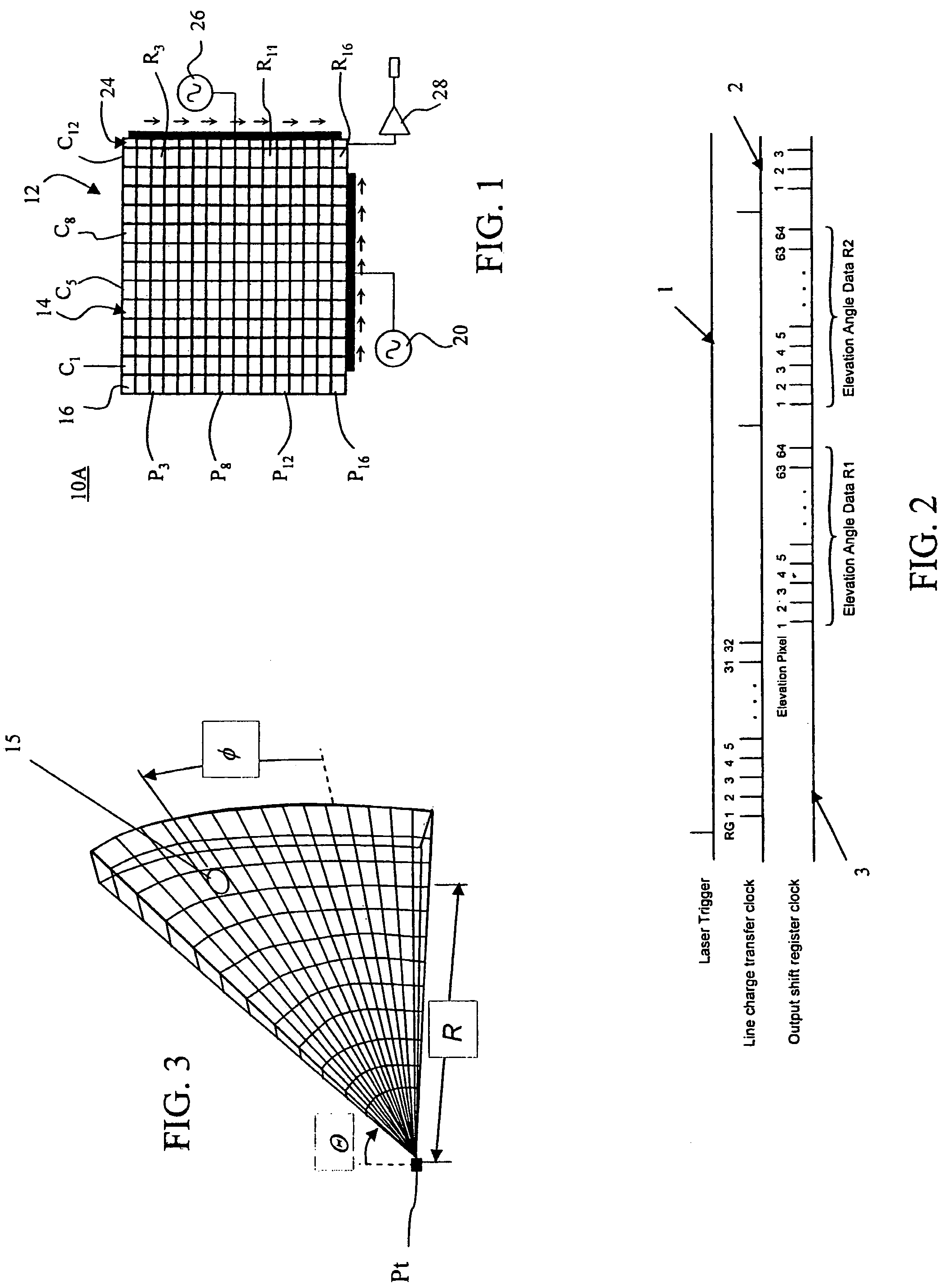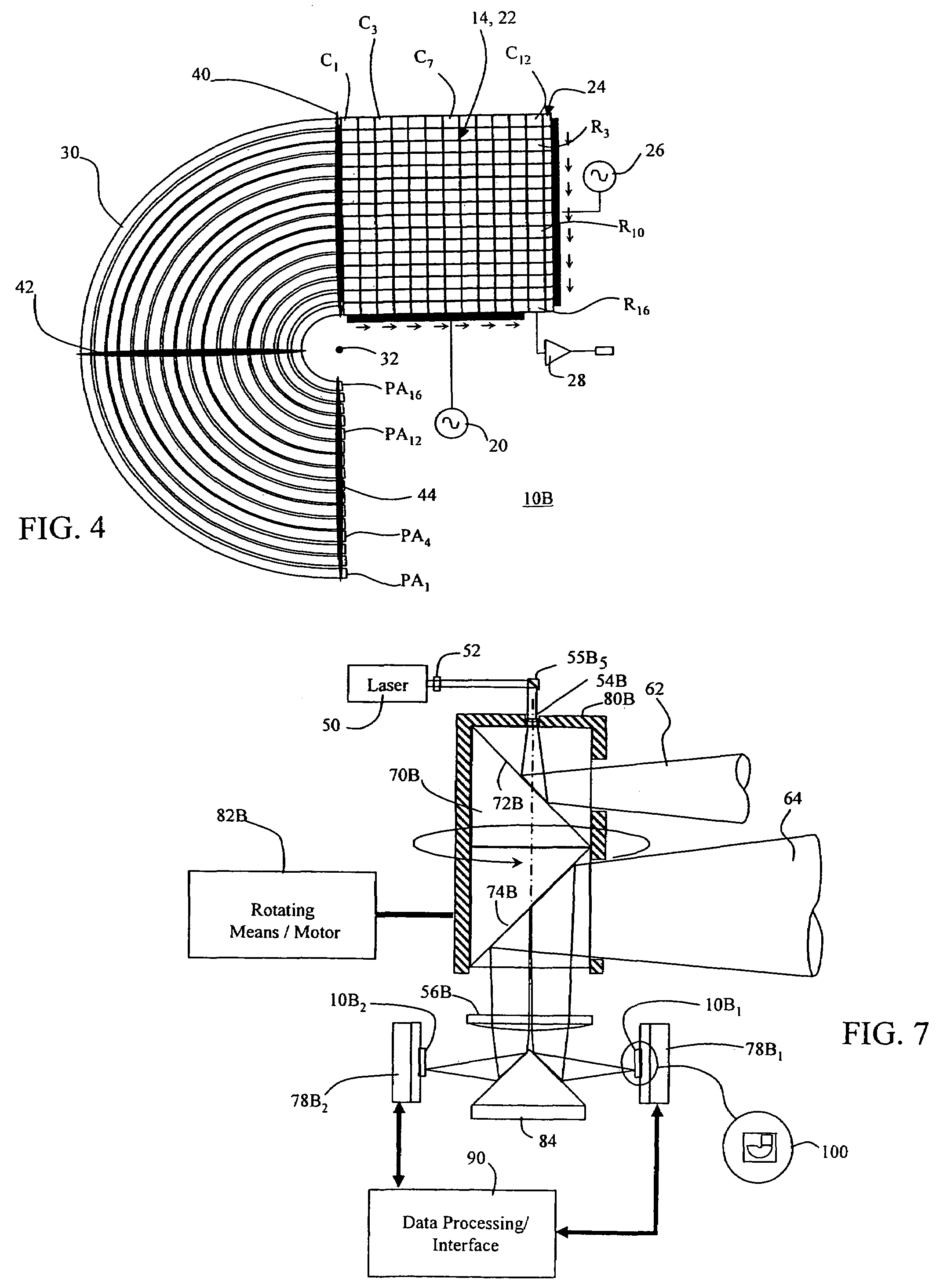Flash ladar system
a laser system and flash ladar technology, applied in the field of flash ladar systems, can solve the problems of time delay measurement circuitry, high energy laser pulses, host of design and manufacturing complexities, etc., and achieve the effect of simplifying design
- Summary
- Abstract
- Description
- Claims
- Application Information
AI Technical Summary
Benefits of technology
Problems solved by technology
Method used
Image
Examples
Embodiment Construction
[0029]Referring now to the drawings wherein like reference numerals represent like or corresponding parts in each of the several figures, and more particularly to FIG. 1 thereof, a sensor 10A is provided with a charge storage matrix or array 12 having columns and rows of charge storage pixels 14.
[0030]In FIG. 1, the reference character C1 represents the first column of charge storage pixels, the reference character C5 represents the fifth column of charge storage pixels, the reference character C8 represents the eighth column of charge storage pixels and the reference character C12 represents the twelfth or last column of charge storage pixels. The columns of charge storage pixels may be viewed as range bins.
[0031]The third row of charge storage pixels is indicated by reference character R3, the eleventh row of charge storage pixels is indicated by reference character R11, and the last or sixteenth row of charge storage pixels is represented by reference character R16.
[0032]A photos...
PUM
 Login to View More
Login to View More Abstract
Description
Claims
Application Information
 Login to View More
Login to View More - R&D
- Intellectual Property
- Life Sciences
- Materials
- Tech Scout
- Unparalleled Data Quality
- Higher Quality Content
- 60% Fewer Hallucinations
Browse by: Latest US Patents, China's latest patents, Technical Efficacy Thesaurus, Application Domain, Technology Topic, Popular Technical Reports.
© 2025 PatSnap. All rights reserved.Legal|Privacy policy|Modern Slavery Act Transparency Statement|Sitemap|About US| Contact US: help@patsnap.com



